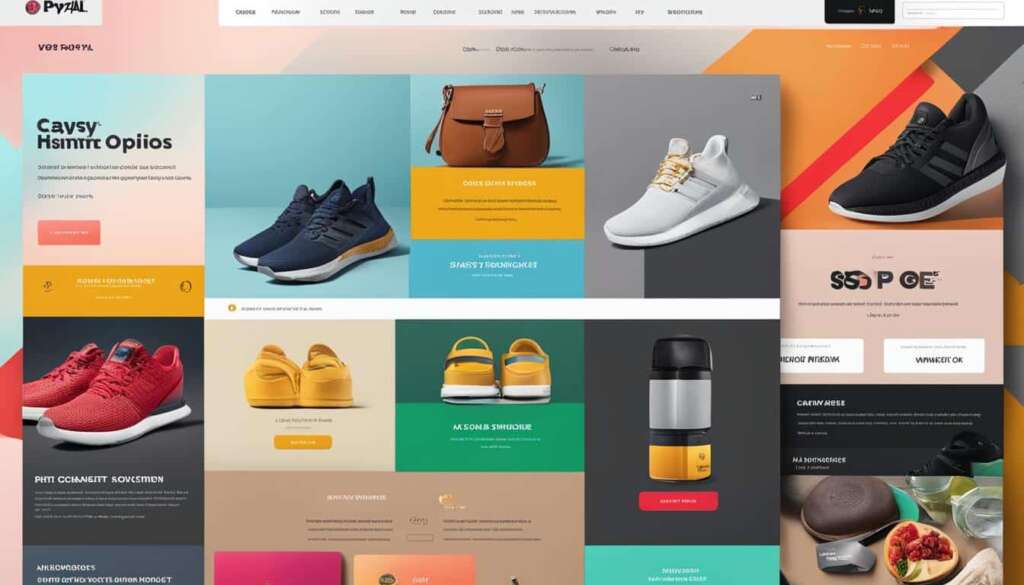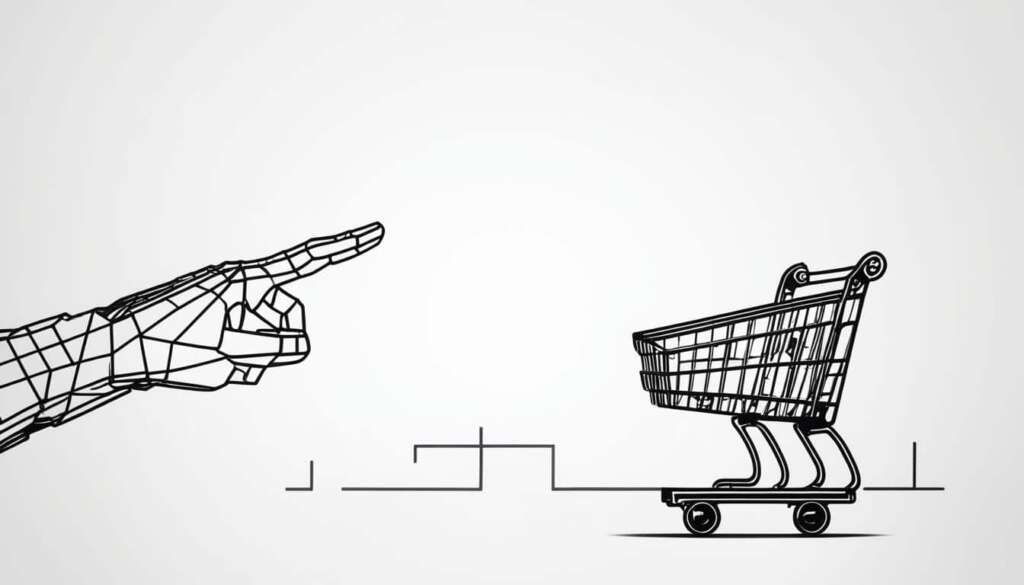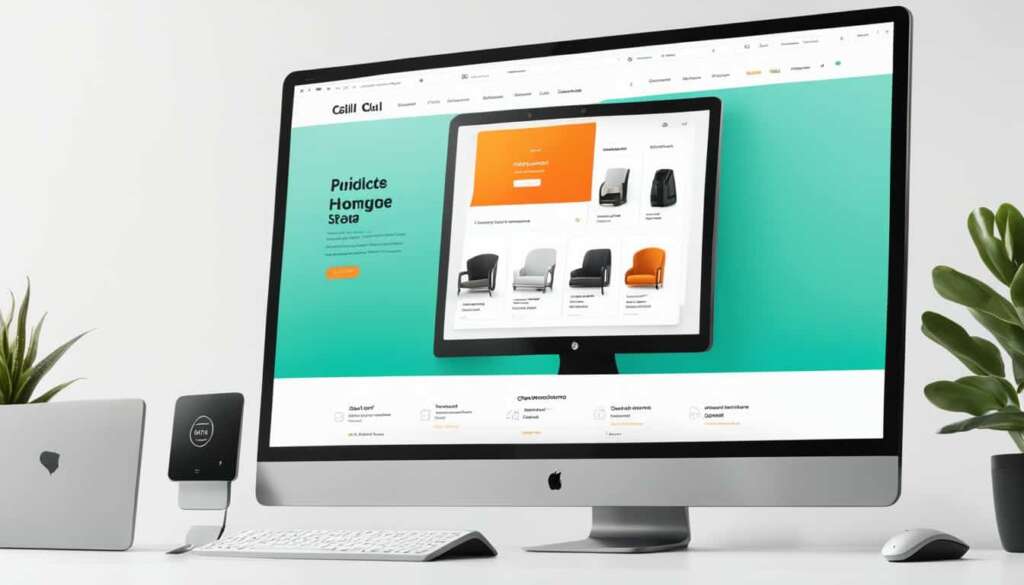Table of Contents
E-commerce solutions are essential for the success of any online shop. By implementing the right strategies, you can enhance the performance of your business, streamline sales, and boost customer satisfaction. In this guide, we will discuss key techniques for optimising your e-commerce store to increase conversions and revenue. From improving product pages to enhancing pricing, personalisation, mobile optimisation, and more, we will cover it all. Let’s explore how you can optimise your shop with e-commerce solutions.
The Importance of E-commerce Conversion Rate
Before we dive into optimization strategies, let’s understand the concept of e-commerce conversion rate. A conversion in e-commerce refers to a visitor taking a desired action, such as making a purchase, saving an item, or adding an item to their shopping cart. The conversion rate is the percentage of visitors who convert out of the total number of visitors.
According to BigCommerce, the average e-commerce conversion rate is around 2.5-3%. However, this rate can vary based on factors like location, device, and the specific conversion action. Tracking your conversion rate using Google Analytics allows you to gain insights into your website’s performance and identify areas for improvement.
Setting goals to increase your conversion rate should be a priority for any e-commerce business. A higher conversion rate means more revenue and increased profitability. With the right strategies, you can optimize your e-commerce store to achieve better conversion rates.
In the upcoming sections, we will explore various e-commerce optimization ideas that can help you boost your conversion rate and drive more sales. These optimization techniques will not only improve your website’s performance but also enhance the overall user experience, leading to increased customer satisfaction and loyalty. Let’s take your e-commerce business to the next level.
Improve Product Pages
One of the key areas to focus on for e-commerce optimization is improving your product pages. The goal is to make your product pages convincing and persuasive, encouraging visitors to make a purchase. To achieve this, you can start by ensuring easy navigation on your site and implementing breadcrumbs to help shoppers find new products. Catchy and SEO-friendly titles for your products will also help improve visibility in search engines. Including high-quality product images, videos, and detailed descriptions will allow shoppers to get a clear picture of your products. Utilizing social proof like ratings, reviews, and likes can provide further validation of your product’s appeal. Finally, pricing plays a crucial role, so it’s important to get it right. These optimization techniques will help improve your product pages and drive conversions.
Easy navigation and breadcrumbs are essential elements for effective product page optimization. A well-organized navigation menu allows visitors to easily explore different categories and subcategories within your online store. Breadcrumbs, on the other hand, provide clear paths for users to follow back to previous pages, making it easier for them to navigate and find new products.
Catchy and SEO-Friendly Titles
The titles of your product pages should be catchy, descriptive, and optimized for search engines. Craft titles that highlight the key features and benefits of your products, while incorporating relevant keywords. This will not only capture the attention of potential customers but also improve your visibility in search engine result pages.
High-Quality Product Images and Videos
A picture is worth a thousand words, so make sure to include high-quality product images that showcase your products from different angles. This helps customers visualize the product and make informed purchasing decisions. Additionally, embedding relevant videos that demonstrate the product’s features and usage can provide further clarity and enhance the overall shopping experience.
Detailed Product Descriptions
Accurate and detailed product descriptions are crucial for providing customers with the necessary information they need to make a purchase. Highlight key features, specifications, and any unique selling points. Use bullet points or numbered lists to make the information easily scannable and digestible.
Social Proof: Ratings, Reviews, and Likes
Social proof is a powerful tool in building trust and credibility with potential customers. Include customer ratings, reviews, and likes on your product pages to showcase positive feedback and user experiences. This social proof can significantly influence purchase decisions and increase conversions.
Pricing Optimization
Price is a major factor in the buying decision process. Ensure that your pricing is competitive and aligned with the value your products provide. Display clear pricing information, special offers, and discounts prominently on your product pages. Consider implementing pricing strategies such as charm pricing (ending prices with 99 or 95) to make products appear more affordable and increase conversions.
By implementing these optimization techniques, you can create engaging and persuasive product pages that captivate visitors, drive conversions, and ultimately boost sales for your e-commerce store.
Optimize Your Pricing
Optimizing your pricing strategy is a critical component of e-commerce optimization. The right pricing can have a significant impact on your sales and conversions, making it essential to employ effective techniques. Here are some strategies to help you achieve pricing optimization:
Product Comparison
One effective strategy is to provide a product comparison feature that allows customers to view and compare two or more products side-by-side. This not only facilitates informed decision-making but also increases sales for the lower-priced product.
Clear Call to Action
To improve conversions, it’s crucial to have a clear call to action that guides customers towards their desired action, such as making a purchase or signing up. Use compelling language and visually appealing buttons to prompt customers to take the desired action.
Reduce Choice Paralysis
Too many options can overwhelm customers and lead to decision paralysis. Reduce choice paralysis by highlighting the preferred option or recommending a limited selection to help customers make faster decisions.
Charm Pricing
Consider employing charm pricing, which involves pricing products just below a round dollar number. For example, pricing a product at £9.99 instead of £10 can make it appear more affordable and increase conversions.
Live Chat Support
Offering live chat support on your pricing pages can be beneficial. It allows you to address customer questions and concerns in real-time, helping to build trust and boost conversions.
Highlight Product Benefits
Emphasize the unique benefits and features of your products, making it clear why customers should choose them over competitors. Highlight any special offers, discounts, or exclusive features to incentivize purchases.
Build Trust with Trust Seals
Include trust seals and secure payment logos on your pricing pages to instill confidence in customers. These trust indicators help reassure customers that their personal and financial information will be secure when making a purchase.
Offer Free Trials
Consider offering free trials or introductory periods to entice customers to try your products or services. This gives customers a risk-free opportunity to experience the value you provide.
By implementing these pricing optimization strategies, you can improve your pricing structure, increase conversions, and drive sales.

Image: Pricing optimization can have a significant impact on your sales and conversions.
Use Personalization
Personalization is an effective strategy for e-commerce optimization. Modern shoppers expect a personalized shopping experience tailored to their preferences. By offering relevant offers and product recommendations, you can increase the chances of customers making a purchase. Geolocation can be used to customize the browsing experience based on the customer’s location, while device customization ensures a seamless experience across different devices. Personalized marketing emails based on customer behavior and preferences can also drive conversions. Implementing personalization techniques will enhance the customer experience and improve your e-commerce store’s performance.
Take a look at the table below for a clear understanding of the benefits and impact of personalization:
| Benefits of Personalization | Retailers’ Perspective | Customer Perspective |
|---|---|---|
| Increased conversion rates | Improved sales and revenue | Relevant offers and product recommendations |
| Enhanced customer loyalty | Higher customer retention | Personalized browsing experience |
| Improved customer satisfaction | Positive brand perception | Customized marketing emails |
| Reduced cart abandonment | Increased average order value | Improved shopping convenience |
By incorporating personalization into your e-commerce strategy, you can unlock the full potential of your online store and create a tailored shopping experience that meets the expectations of today’s customers.
Optimize for Mobile Audiences
Mobile optimization plays a crucial role in the success of your e-commerce business. With the increasing number of consumers shopping on mobile devices, it’s essential to ensure your website provides an optimal mobile experience. To achieve this, focus on mobile optimization, responsive design, mobile compatibility, fast loading times, and user-friendly navigation.
Start by ensuring your website has a responsive design that adapts to different screen sizes. This will allow your customers to view and navigate your site seamlessly, regardless of the device they are using. It’s also important to check for mobile compatibility, making sure that your content and graphics are readable and visually appealing on mobile devices.
Fast loading times are critical for mobile users, as slow loading times can lead to high bounce rates. Optimize your mobile site to ensure it loads quickly, providing a smooth and efficient user experience. Additionally, create a user-friendly navigation experience on mobile devices, making it easy for shoppers to browse and make purchases. Incorporate clear menu structures, intuitive search bars, and streamlined checkout processes to enhance the mobile shopping experience.
By prioritizing mobile optimization, you can attract and retain mobile shoppers, leading to increased conversions and improved overall performance for your e-commerce business.
FAQ
What are e-commerce solutions?
E-commerce solutions refer to strategies and tools used to optimize and improve the performance of an online shop. These solutions can streamline sales processes and boost customer satisfaction.
What is e-commerce conversion rate?
E-commerce conversion rate is the percentage of visitors to an online shop who take a desired action, such as making a purchase, saving an item, or adding an item to their shopping cart.
How can I track my e-commerce conversion rate?
You can track your e-commerce conversion rate using tools like Google Analytics. By setting up goals and tracking the actions taken by visitors on your website, you can measure and improve your conversion rate.
What is the average e-commerce conversion rate?
According to industry data, the average e-commerce conversion rate is around 2.5-3%. However, it’s important to note that this rate can vary based on factors such as location, device, and the specific conversion action.
How can I improve my product pages?
To improve your product pages, you can focus on easy navigation, implement breadcrumbs for better product discovery, use catchy and SEO-friendly titles, include high-quality images and videos, provide detailed descriptions, and utilize social proof such as ratings and reviews.
What role does pricing play in e-commerce optimization?
Pricing plays a crucial role in e-commerce optimization. By getting your pricing right and implementing strategies such as product comparison, clear call to action, reducing choice paralysis, charm pricing, live chat support, highlighting product benefits, and building trust with trust seals, you can increase your sales and conversions.
How can personalization enhance e-commerce performance?
Personalization is an effective strategy for e-commerce optimization. By offering relevant offers and product recommendations, customizing the browsing experience based on the customer’s location and device, and sending personalized marketing emails based on customer behavior and preferences, you can increase the chances of customers making a purchase and improve their shopping experience.
Why is mobile optimization important for e-commerce success?
Mobile optimization is crucial for e-commerce success because more and more consumers are shopping on mobile devices. To optimize for mobile audiences, it’s important to have a responsive design, ensure mobile compatibility, improve loading times, and provide user-friendly navigation to attract and retain mobile shoppers and increase conversions.












